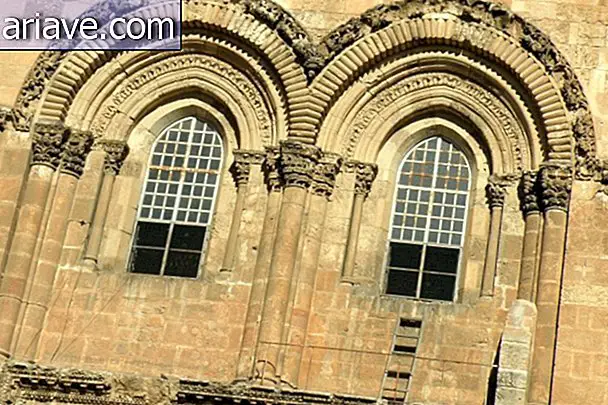K'inich Janaab 'Pakal: Mayan Ruler Who Would Be an Alien of the Past
You may have heard more of an interesting story about past civilizations that would have had contact with extraterrestrial beings and even traveled into space, right? There are reports of this kind involving cultures from around the world, such as the ancient Sumerians, the Incas, the Aztecs, and the Maya. Well, speaking of the Maya, today we here from Mega Curioso will tell you about an intriguing character named K'inich Janaab 'Pakal, who belonged to these people.
Important figure
K'inich Janaab 'Pakal - also known as Pakal the Great - lived during the 6th century and was ruler of the Mayan state of B'aakal, whose headquarters was the ancient city of Lakam Ha'. This site is now housed in an impressive archaeological complex called Palenque and is about 130 kilometers south of Ciudad del Carmen in the state of Chiapas, Mexico.

Pakal took over in 615, when he was only 12 years old, and remained until his death in 683 at 80 - meaning he was in power for 68 years. According to historical records, during its reign, the city of Lakam Ha 'flourished and lived many years of economic prosperity, becoming one of the most important localities in the region. In addition, the ruins of Palenque testify that many architectural, artistic and engineering advances have taken place on the site.

This is all very cool and interesting, but the whole thing takes an intriguing setback with the discovery of Pakal's tomb in 1952. Mexican archaeologist Alberto Ruiz found it while working inside a building called Temple of the Inscriptions .
Tomb Discovery
For a century after the Palenque complex was located, archaeologists scouring the site believed that the small building had served religious purposes. This until Ruiz realized that the temple walls seemed to continue into the underground in 1948. Then he and his team began digging and finally found the former ruler's burial chamber. Here's a reconstruction of the following tomb:

Inside, archaeologists found several inscriptions on the walls that showed revealing figures that were later identified as the Nine Lords of the Night, characters who represented priests who were to guide Pakal on his journey through the world of the dead. Archaeologists have also come across the ruler's sarcophagus and, within it, the body of the former ruler - wearing an impressive jade mask and adorned with jewels like bracelets, rings and a massive necklace. Check it out below:

However, what gave rise to the stories that Pakal was an astronaut of the past were the fascinating reliefs carved into the lid of his sarcophagus. According to archaeologists, the play shows the central figure of a man bent over backwards at the base of a tree, and a bird above it that may be falling or taking flight from inside a large urn. Moreover, the various symbols surrounding the ends of the lid represent important elements of Mayan cosmology. Look that:

Old astronaut
But the folks who uphold the theory of ancient astronauts interpret these figures all a little differently ... For this gang, the lid of Pakal's sarcophagus actually supposedly shows a man inside a spaceship and with his hands over a panel full of controls and buttons - presumably used to fly the ship. And not only that, no!
In addition, ancient astronaut theorists say that the pictures show a device near the man's nose that would allow him to breathe once into space. The image also shows the character pressing a pair of pedals and what appear to be flames coming out of the back of the "vehicle". These people can see all these things by simply looking at the sarcophagus lid horizontally. Look:

Ancient astronaut theorists still say that analysis would have pointed out that the man found inside the sarcophagus was no more than 40 years old when he was buried - although Pakal was 80 when he died - so someone else would have been buried in the ruler's place. And since no corpse corresponding to that of an old man was found in the mortuary chamber, the deduction was that Pakal was an alien who returned to the stars after completing his mission on Earth.

Historians and archaeologists continue to argue that the engravings refer to the Mayan belief about what happens to men after death, and the symbols in the sarcophagus correspond to a part of the cosmology of this culture. However, the man portrayed on the sarcophagus lid eventually became known as the "Palenque Astronaut" - and the man who was supposed to occupy the tomb, as an alleged alien who returned to space.
***
Mega is competing for the Digital Influencers Award, and you can help us be double champions! Click here to find out how. Enjoy following us on Instagram and subscribe to our YouTube channel.











